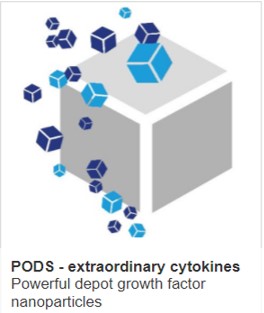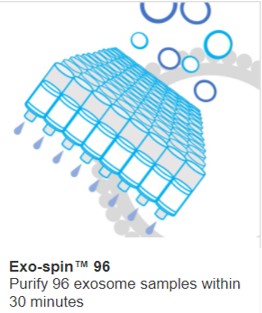Hunter syndrome: Hope via charity-funded research

The rare X-linked lysosomal storage disorder Hunter syndrome (MPS II) arises from deficient activity of the enzyme iduronate-2-sulfatase (I2S). Without this enzyme, glycosaminoglycans (GAGs) such as dermatan and heparan sulfate accumulate in cells throughout the body, leading to progressive damage in multiple organs and often the brain. Clinically, patients most frequently are boys (as the gene is on the X-chromosome), presenting between ages ~2–4 with features such as coarse facial features, hepatosplenomegaly, joint stiffness, hearing impairment, and in the more severe (neuronopathic) form, neurocognitive decline, behavioural problems and shortened lifespan.
Treatment until recently has been limited. Intravenous enzyme replacement therapy (ERT) with recombinant idursulfase has been approved and shown to ameliorate somatic (non-brain) manifestations—improving liver/spleen volumes, mobility, lung/airway function—but the ability to impact the cognitive and neurological decline has remained very limited, because the enzyme cannot efficiently cross the blood–brain barrier (BBB). A 2017 systematic evidence review concluded that although reductions in urinary GAGs and organomegaly were of moderate strength evidence, there was insufficient or low strength evidence for improved walk tests, earlier treatment impact, or clear longâ€term neurological benefit.
Recently, exciting progress has been made toward overcoming the central nervous system (CNS) barrier. In the UK, a clinical trial of a next-generation stem-cell gene therapy, led by Brian Bigger at University of Manchester, was approved: children under 12 months old with severe MPS II will receive autologous hematopoietic stem cells (HSCs) modified via a lentiviral vector carrying a version of the I2S gene tagged to allow transit across the BBB. The hope is that this approach will deliver I2S enzymatic activity not only systemically, but also into the brain, thereby addressing the neurodegenerative component of the disease. Preâ€clinical mouse studies reportedly showed dramatic improvement in memory and normalization of bone abnormalities.
Charity funded clinical trials
The catalytic role of charitable funding in enabling rareâ€disease clinical research. Because diseases such as MPS II affect only around 1 in 100,000–170,000 male births, they are often neglected by large-scale commercial R&D until later in development. In that context, charities and philanthropic investments often serve as the seed funders and enablers of innovation, de-risking early-stage research, enabling proof-of-concept and helping translate bench science into clinical readiness.
The charity Action Medical Research (UK) has supported Prof Bigger’s work on gene therapy for Hunter syndrome, raising funds toward improved brainâ€targeted enzyme delivery. Similarly, another UK charity, LifeArc, pledged to fund half of a related project to improve enzyme crossing of the BBB. Furthermore, the children’s charity Great Ormond Street Hospital Children’s Charity (GOSH Charity) awarded ~£2.8 million across twelve paediatric rare disease projects including Hunter syndrome research.
Why does this matter? First, charitable funding often supports the highâ€risk, highâ€impact early phase work (such as vector design, stem cell modification, BBBâ€tagging strategies) that is less likely to attract major industry partners until a clinical proofâ€ofâ€concept exists. This is especially true in ultra-rare diseases. Second, charity-funded research builds not only scientific proof but also infrastructure: patient registries, natural history studies (important in rare disease), clinical trial readiness, collaborations between academia and hospitals. For example, the global registry Hunter Outcome Survey (HOS) provides longitudinal data on MPS II patients and has facilitated trial design. Third, charity-driven studies can provide impetus for later industry investment and regulatory approval, thereby shortening time-to-impact for patients.
The impact of this model can be seen in the UK gene-therapy trial opening now: without earlier philanthropic funding to establish the concept of BBB-targeted enzyme delivery, the trial might not have progressed so swiftly. In turn, success in such a trial could for the first time shift the treatment paradigm for MPS II from mainly somatic remission to meaningful neuro-cognitive protection. The ripple effect would extend to families and clinicians grappling with this devastating disease. Charity funded research may also be more afforable: Many of the commercially funded gene therapeis cost millions of dollars.
Challenges
Rareâ€disease trials face small sample sizes, heterogeneous phenotypes (severe vs mild forms), ethical/operational complexity of treating infants, high costs of gene therapies, and the need for longâ€term followâ€up. The 2017 systematic review noted persistent gaps in knowledge about long-term efficacy and cognitive outcome. In addition, scale-up, affordability and equitable access remain questions: even when a therapy is approved, reimbursement and delivery in a health-system context can be difficultThus, charitable funding is not a panacea but a vital catalyst. It enables pathways that would otherwise remain dormant, particularly in ultra-rare conditions like Hunter syndrome.
Hunter syndrome exemplifies how a rare genetic disease with devastating neurological and systemic manifestations is now entering a new era of therapeutic possibilit, thanks in large part to academic innovation, supported by charities who funded the fundamental proof-of-concept research and helped prepare for clinical translation. As the gene therapy trial progresses, it will be crucial to monitor outcomes: will it deliver on its promise of neuro-cognitive benefit? And will the model of charity-seeded, academic-led discovery followed by clinical translation become standard for other rare diseases? For patients and families facing Hunter syndrome, the answer to those questions cannot come soon enough.
IMAGE Hunter syndrome hands CREDIT Martins et al (cc4.0)
Learn more about powerful technologies that are enabling research:



